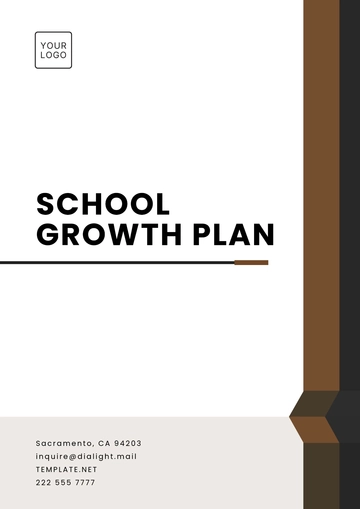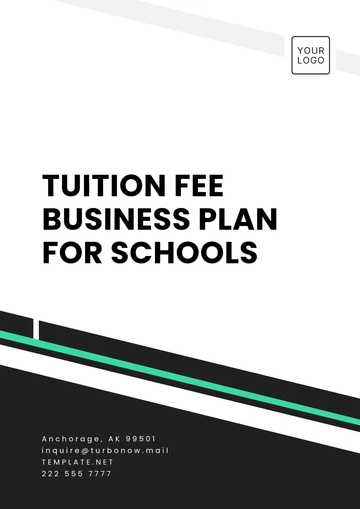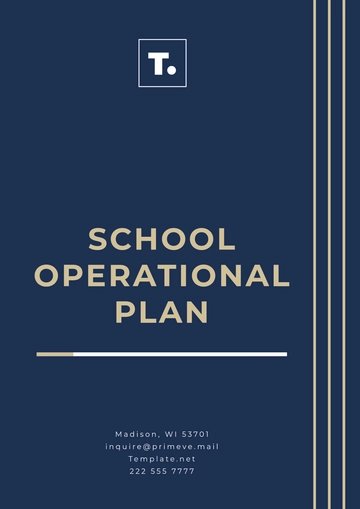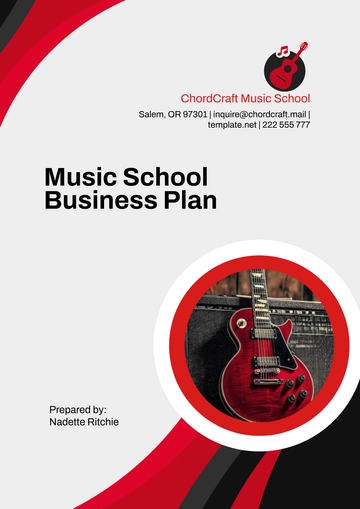Free School Business Plan

1. Executive Summary
Mission Statement: Provide quality education that nurtures students academically, socially, and emotionally, fostering a love for learning and a strong moral foundation.
Vision: Empower students to become lifelong learners and responsible global citizens, equipped with the skills and knowledge to thrive in an ever-changing world.
Goals:
Establish a school that caters to students from Kindergarten through Grade 12, offering a seamless and enriching educational journey.
Integrate modern teaching methodologies with traditional learning to create a well-rounded experience.
Achieve financial sustainability and operational excellence within three years of inception.
Overview:
Name: [Your Company Name]
Location: [Your Company Address]
Type: [Public/Private/Charter]
Anticipated Opening: [Date]
2. Business Description
Legal Structure: The school will operate as a [nonprofit organization/for-profit entity/charitable trust], ensuring compliance with local education laws and regulations.
School Model: Emphasis on [Traditional, Montessori, IB (International Baccalaureate), STEM-focused, arts-centered, or blended learning models].
Target Market:
Age group: [Specify, e.g., 4 to 18 years].
Demographics: Families seeking quality education, diverse communities, and parents prioritizing holistic development.
Unique Value Proposition:
Small class sizes to provide personalized attention.
Highly experienced and certified teachers committed to student success.
Modern facilities, innovative teaching tools, and a curriculum designed to develop critical thinking and creativity.
3. Market Analysis
Industry Overview:
The education sector is increasingly emphasizing innovation, personalized learning, and extracurricular development.
Rising demand for private and specialized schools, fueled by parents' desire for quality education tailored to their children’s needs.
Competitor Analysis:
Direct competitors: Existing schools in the region that cater to similar age groups or demographics.
Indirect competitors: Online schools, homeschooling programs, and after-school enrichment centers.
Target Market Insights:
Analyze population growth and urbanization in the area.
Parent preferences, such as focus on academic excellence, extracurricular programs, and affordability, play a significant role in decision-making.
4. Organizational Structure
Leadership Team:
Principal/Director: Overseeing academic and operational excellence.
Administrative Staff: Managing day-to-day operations, admissions, and finances.
Teachers:
Hiring experienced educators with relevant certifications and specialties.
Maintaining a favorable student-teacher ratio (e.g., 15:1) to foster individualized learning.
Support Staff:
On-campus counselors, IT support personnel, janitorial staff, and cafeteria workers to ensure smooth operations.
5. Curriculum and Programs
Core Curriculum:
Based on national education standards or international frameworks (e.g., IB, Cambridge).
Balanced focus on sciences, mathematics, languages, arts, and humanities.
Special Programs:
Extracurricular activities: Clubs for sports, arts, robotics, and music.
Advanced learning tracks: STEM programs, gifted student initiatives, and language immersion.
Special education services for students requiring additional support.
Technology Integration:
Equipping classrooms with interactive boards, computers, and tablets.
Implementing e-learning platforms to supplement traditional teaching methods.
6. Marketing and Enrollment Plan
Marketing Strategy:
Create a user-friendly website highlighting the school’s mission, facilities, and programs.
Utilize social media channels (Facebook, Instagram, LinkedIn) for promotional campaigns.
Conduct open houses and information sessions to engage with the community.
Leverage local partnerships with businesses, libraries, and community centers to increase visibility.
Enrollment Plan:
Transparent admission policies and easy-to-follow procedures.
Offer scholarships and financial aid to attract diverse applicants.
Early bird registration discounts to incentivize prompt enrollment.
7. Financial Plan
Start-Up Costs:
Facility acquisition/rental: $[X]
Marketing budget: $[Y]
Equipment and learning materials: $[Z]
Revenue Sources:
Tuition fees from enrolled students.
Grants and donations from local organizations, philanthropists, and government programs.
Revenue from auxiliary programs, such as after-school activities and summer camps.
Budget Projections:
Year 1: Start-up expenses and initial revenue.
Year 2-3: Enrollment growth, expanded programs, and stabilized cash flow.
Break-Even Analysis:
Projected break-even point within 2-3 years, dependent on achieving target enrollment figures.
8. Facilities and Operations
Location:
The campus is situated in a safe and accessible area with ample parking and proximity to public transportation.
Spacious classrooms, sports facilities, library, and science labs.
Operations:
Daily schedule designed to balance academic learning with recreational activities.
Comprehensive safety measures, including fire drills, security cameras, and trained staff.
Regular maintenance and upgrades to ensure a conducive learning environment.
9. Risk Management
Potential Risks:
Low enrollment numbers due to high competition or economic downturns.
Regulatory challenges or unexpected changes in education policies.
Insufficient funding to cover operational costs.
Mitigation Strategies:
Diversify revenue streams through grants, donations, and auxiliary services.
Establish strong ties with local education authorities to remain updated on regulations.
Develop a robust contingency fund to address unforeseen financial needs.
10. Appendices
Resumes of key staff members with relevant experience and qualifications.
Detailed financial projections and a breakdown of start-up costs.
Sample marketing materials, including flyers, brochures, and digital ads.
Blueprints or layouts of the planned school facilities.
- 100% Customizable, free editor
- Access 1 Million+ Templates, photo’s & graphics
- Download or share as a template
- Click and replace photos, graphics, text, backgrounds
- Resize, crop, AI write & more
- Access advanced editor
Develop a successful strategy with the School Business Plan Template from Template.net. This editable and customizable template helps you create a comprehensive and professional business plan. Editable in our Ai Editor Tool, it offers a user-friendly experience, making it easy to tailor to your school's specific needs. Ensure your school's growth and success with this essential business plan template.
You may also like
- One Page Business Plan
- Coffee Shop Business Plan
- Restaurant Business Plan
- Food Business Plan
- Real Estate Business Plan
- Executive Summary Business Plan
- Cover Page Business Plan
- Nonprofit Business Plan
- Daycare Business Plan
- Construction Business Plan
- Startup Business Plan
- Medical Business Plan
- Bakery Business Plan
- Service Plan
- Hotel Business Plan
- Catering Business Plan
- School Business Plan
- Healthcare Business Plan
- Transportation Plan
- Sports Plan
- Car Wash Business Plan
- Salon Business Plan
- Clothing Business Plan
- Farming Business Plan
- Boutique Plan





























